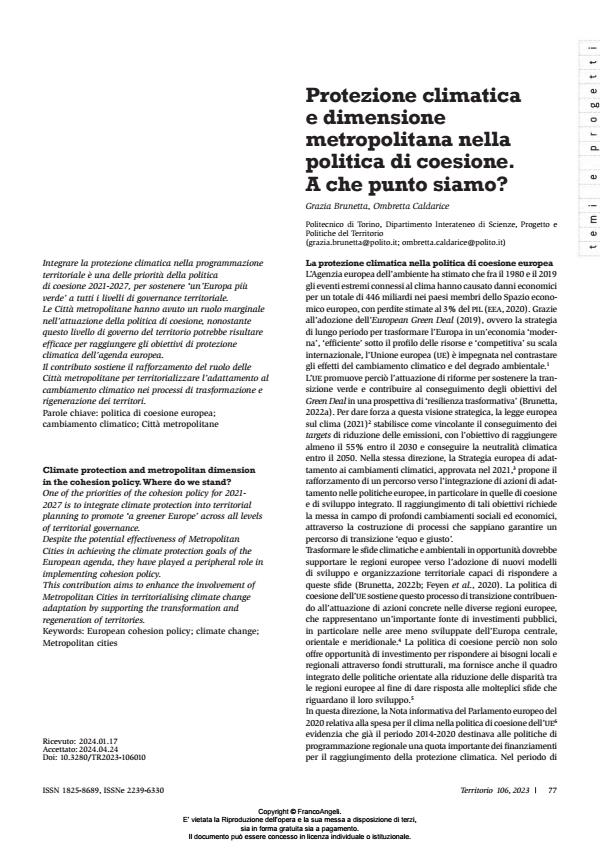Climate protection and metropolitan dimension in the cohesion policy. Where do we stand?
Journal title TERRITORIO
Author/s Grazia Brunetta, Ombretta Caldarice
Publishing Year 2024 Issue 2023/106
Language Italian Pages 6 P. 77-82 File size 210 KB
DOI 10.3280/TR2023-106010
DOI is like a bar code for intellectual property: to have more infomation
click here
Below, you can see the article first page
If you want to buy this article in PDF format, you can do it, following the instructions to buy download credits

FrancoAngeli is member of Publishers International Linking Association, Inc (PILA), a not-for-profit association which run the CrossRef service enabling links to and from online scholarly content.
One of the priorities of the cohesion policy for 20212027 is to integrate climate protection into territorial planning to promote ‘a greener Europe’ across all levels of territorial governance. Despite the potential effectiveness of Metropolitan Cities in achieving the climate protection goals of the European agenda, they have played a peripheral role in implementing cohesion policy. This contribution aims to enhance the involvement of Metropolitan Cities in territorialising climate change adaptation by supporting the transformation and regeneration of territories.
Keywords: European cohesion policy; climate change; Metropolitan cities
Grazia Brunetta, Ombretta Caldarice, Protezione climatica e dimensione metropolitana nella politica di coesione. A che punto siamo? in "TERRITORIO" 106/2023, pp 77-82, DOI: 10.3280/TR2023-106010